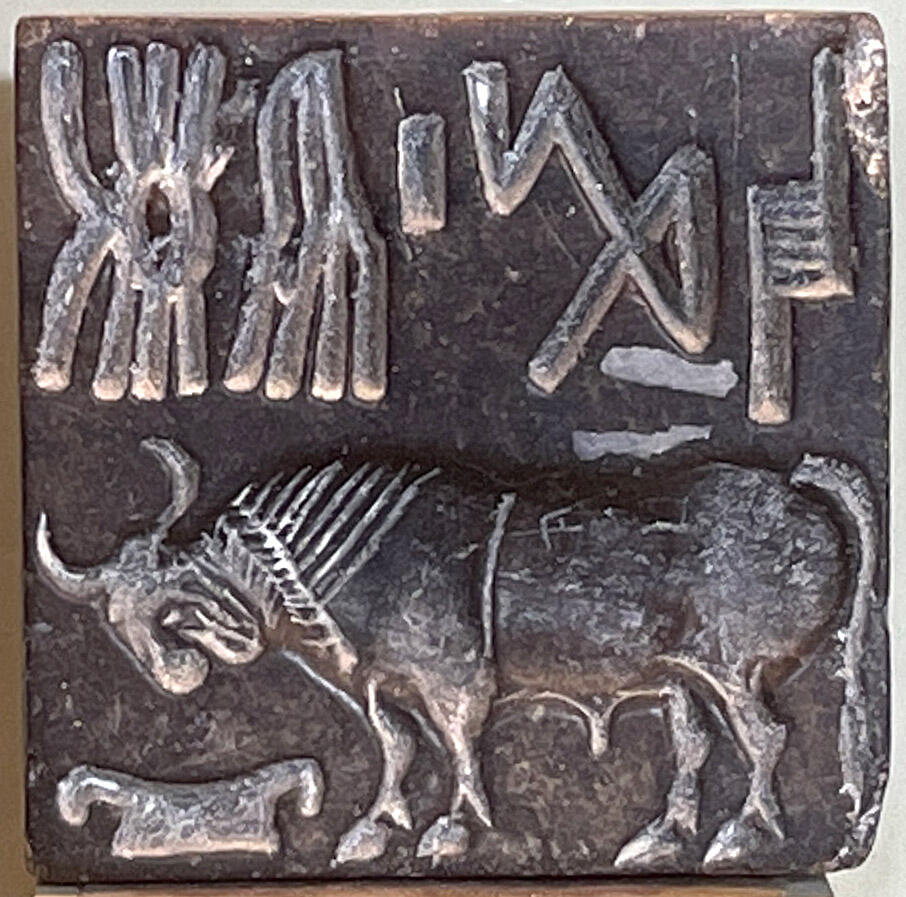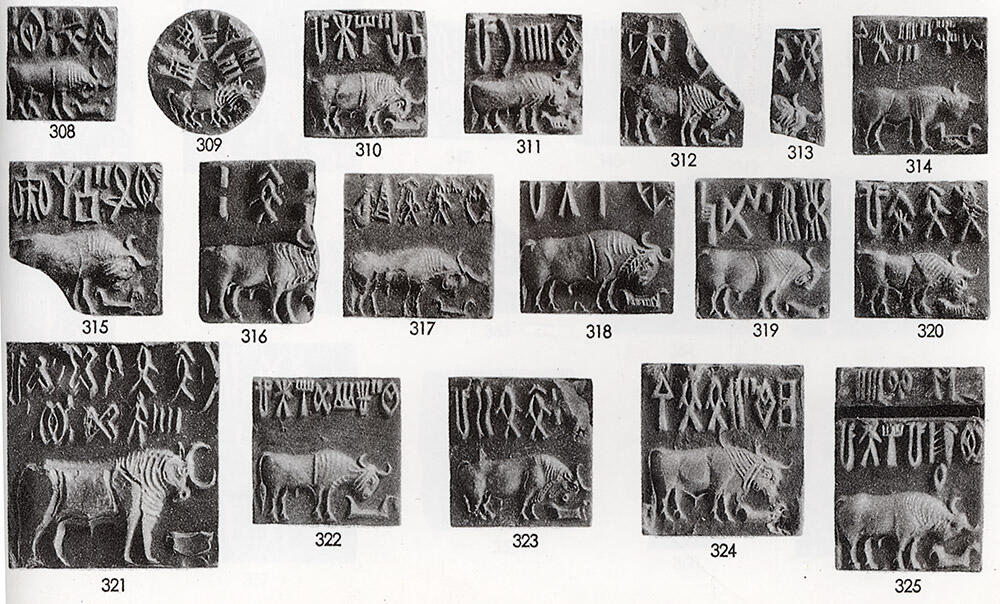The strict geometry and subtle deviations on this seal speak to how nuanced ancient Indus languages might have been (another view of this bison seal). The second image shows some of the sealings Marshall is referring to.
Sir John Marshall makes a big claim about the accuracy in the depiction of the animals on bison seals referring to one from Mohenjo-daro similar to the one above (Mohenjo-daro, p. 43):
"So, too, is the drawing of the bison on Seal 318, with its powerful arched shoulders and relatively small hindquarters. If we compare these animals with others on these seals, such as the rhinoceros and tiger (Nos. 341-55) we cannot fail to perceive how far the latter fall short of them, the fact being that they lack altogether the convincing touch of truth which comes only from personal observation on the part of the artist. The same remark applies also to the manifold figures of unicorns; for, though there is an undoubted semblance of reality about these animals—enough at any rate to distinguish them from purely chimerical ones, like those depleted on Seals 378-82—nevertheless, by comparison with the humped bulls, buffaloes, and bison, they appear weak, characterless creatures, which we may be sure the engraver himself never set eyes on."
Elsewhere Marshall writes (p. 385):
"The animal next in order of popularity [after the unicorn seal] was the short-horned bull seen on seals 308-26 [Image 2], Character of 487, 536, and 557A There is, fortunately, no doubt whatever about this animal, which is also very commonly represented in pottery, sometimes roughly made by children, sometimes exceptionally well made, presumably for votive purposes. It is remarkable that in all its representations, both on the seals and as pottery figures, the head is always lowered and twisted slightly to one side, as if the animal were just about to charge. The fact that the bull is always shown in angry mood suggests that this aspect of it was significant. Possibly the animal may have been the emblem or vehicle of a god of war or destruction.
"In most cases the heavy wrinkles on the shoulder of the bull are shown with and sometimes the dewlap also. The fact that these wrinkles somewhat resemble those on the unicorn’s neck and head lends some support to the view that in the latter animal also wrinkles and not garlands are indicated. On several of the seals, Nos. 310, 312, 316, 318 etc., the animal wears an ornamental collar or garland around the neck [not on the seal above].
"In every case there is a low manger (?), flat-based and with concave sides. This manger is distinctive and though the bull itself is duplicated in the art of the surrounding countries, yet the unusual shape of the manger is characteristic of the art of the Indus Valley civilization. The point is stressed because the occurrence of the same form of manger on a cylinder-seal of bone found at Susa leaves no doubt, I think, that this seal either came from India in the first instance, or, as is suggested by its very rough workmanship, was engraved for an Indian visitor to Susa by an Elamitic workman.
At first sight the attitude of the animal suggests that he is about to eat from the manger but that his head is really intended to be lowered in anger seems tome indicated by the pottery figures of the same animal being obviously made to represent him in angry mood (PI. XCVII, 23-6)."
Dr. Massimo Vidale's article The Short-Horned Bull on the Indus Seals: a Symbol of the Families in the Western Trade? is highly recommended for a deeper look at this important animal icon.




